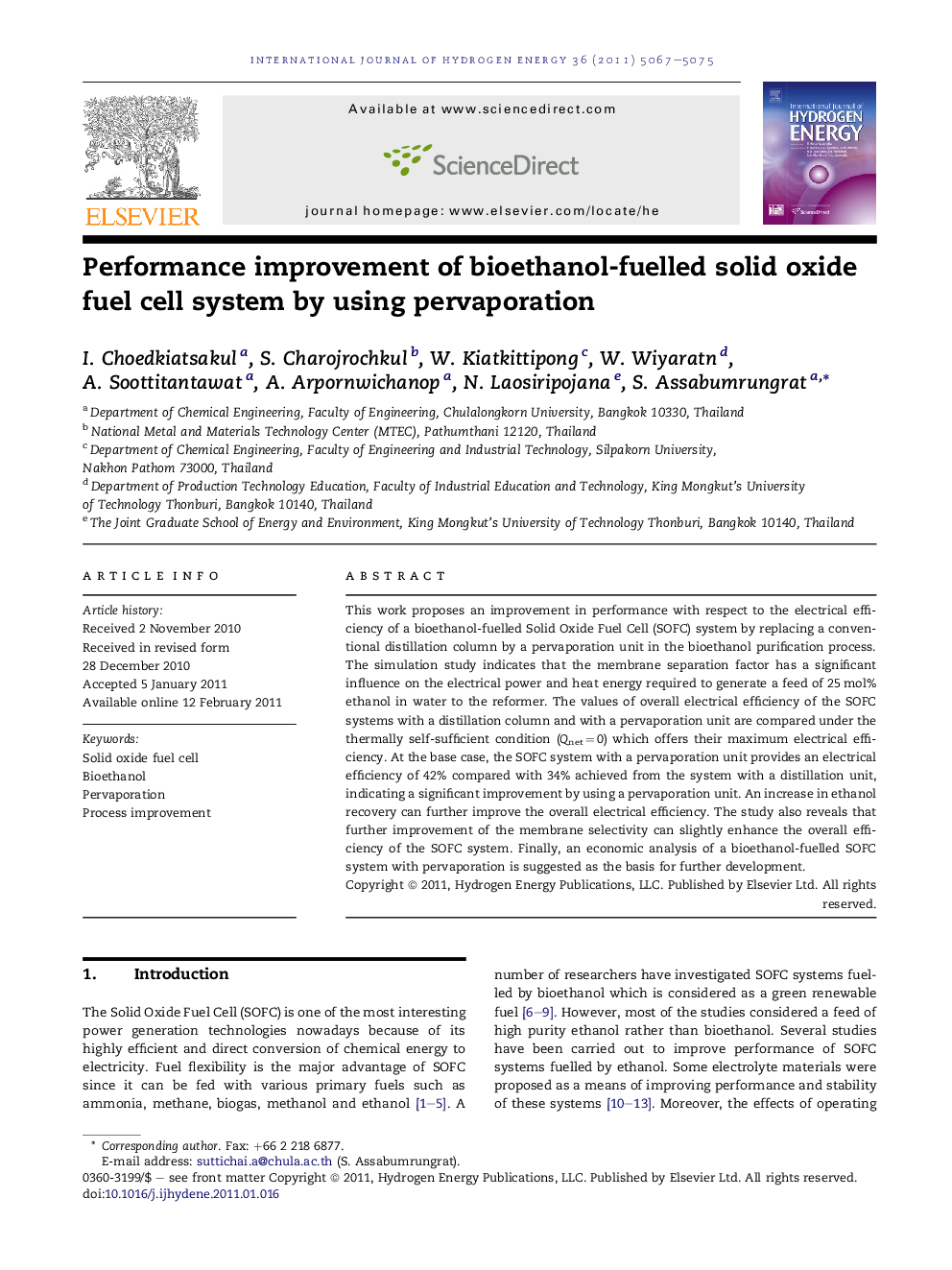| Article ID | Journal | Published Year | Pages | File Type |
|---|---|---|---|---|
| 1279814 | International Journal of Hydrogen Energy | 2011 | 9 Pages |
This work proposes an improvement in performance with respect to the electrical efficiency of a bioethanol-fuelled Solid Oxide Fuel Cell (SOFC) system by replacing a conventional distillation column by a pervaporation unit in the bioethanol purification process. The simulation study indicates that the membrane separation factor has a significant influence on the electrical power and heat energy required to generate a feed of 25 mol% ethanol in water to the reformer. The values of overall electrical efficiency of the SOFC systems with a distillation column and with a pervaporation unit are compared under the thermally self-sufficient condition (Qnet = 0) which offers their maximum electrical efficiency. At the base case, the SOFC system with a pervaporation unit provides an electrical efficiency of 42% compared with 34% achieved from the system with a distillation unit, indicating a significant improvement by using a pervaporation unit. An increase in ethanol recovery can further improve the overall electrical efficiency. The study also reveals that further improvement of the membrane selectivity can slightly enhance the overall efficiency of the SOFC system. Finally, an economic analysis of a bioethanol-fuelled SOFC system with pervaporation is suggested as the basis for further development.
